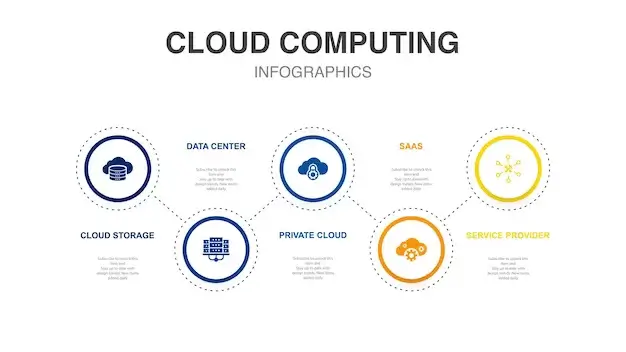Cloud stacking SEO is a strong method that uses cloud-based abilities to make a website more visible and authoritative in search engine results. Cloud stacking is a way to make a website more relevant and trustworthy by tying together different cloud-based properties like virtual machines, websites, blogs, and wikis that are stored on well-known cloud platforms like Amazon Web Services (AWS), Google Cloud Platform (GCP), and Microsoft Azure are some examples of these cloud-based properties. This complete guide will talk about what is cloud stacking SEO, how to do it right, the best ways to do it, the things you should avoid, and real-life examples of cloud stacking techniques that work.
Traditional SEO involves building one thing at a time. Cloud Stacking SEO, on the other hand, is a more ambitious method that uses the influence of well-known cloud platforms to boost your website’s ranking power. SEO architects-to-be, buckle up because we’re about to dive into the details What is Cloud Stacking Seo?
The Power of Cloud Stacking SEO
These cloud-based qualities are linked to the target website and to each other. The goal of cloud stacking is to make the target website more relevant and trustworthy in the eyes of search engines. This could then help the website’s search engine rankings, which could mean more people finding it and visiting it naturally.
Benefits of Cloud Stacking SEO
Imagine if your website got the SEO power of Google Drive or Microsoft OneDrive. That is what Cloud Stacking Seo is all about. Some benefits are:
Gained Domain Authority and Improved SEO
Cloud platforms have a lot of domain authority, which can help your website rank higher in search engines right away. One main goal of cloud stacking SEO is to help the target website move up in the search engine results. By using the related cloud properties, the website can get more signs of authority and importance, which search engines use to decide where to rank it. If a website has better scores, it’s more likely to get free traffic and possible buyers.
More Visibility Using Cloud Stacking SEO
Make several tailored, high-quality pages on different cloud platforms to spread your digital footprint and get more free traffic. Cloud stacking SEO makes a website more visible in search engine results by making multiple cloud-based features and tying them to the goal website. Whenever search engines crawl and analyze these linked properties, they see how relevant and trustworthy a website is, which makes it more visible in search results.
Targeted Reach
Make material fit certain platforms and groups to reach niche areas better.
Brand Building
Make your name known on several different sites, which will help people trust and recognize it. By making many cloud-based properties that link to the target website, cloud stacking helps to spread out its link profile. This spreads out the links so that the website doesn’t depend on just one source. This makes the link profile look more natural and strong to search engines. Because the website has a wide range of links, it is less likely to be hit with fines or changes to the algorithm that is meant to stop abusive link-building.
Content Diversification
Try out different types of content, like slideshows, movies, and lectures, to keep people interested in different ways.
Implementing Cloud Stacking: Step-by-Step Guide
Let’s get to work and build it. To use Cloud Stacking, do the following:
- Choose Relevant Platforms: Match your choices to the people you want to reach and the themes of your material. Pick the AWS, GCP, or Azure cloud option that fits your wants and price the best.
- Set Up Individual Accounts: To stay organized and in charge, make a separate account for each cloud site you want to use.
- Make Cloud-Based Properties: On each platform, make virtual machines, websites, blogs, and wikis that can connect to each other.
- Make excellent content that is optimized: Every page should be useful, full of useful information, and full of keywords. Use both on-page and off-page SEO methods to make each site work better for the associated keywords.
- Connect your cloud properties: From each cloud page, link back to your main website to make a network that works together. You can connect the properties by adding links to the target website along with other cloud-based properties from each property.
- Take part in the platforms: Join groups on the site, answer questions, and make friends.
- Keep track of and look over your results: Keep an eye on work, make changes to your plans, and keep improving your method.
Also Check: How can Google AI Help Marketers Reach Potential Customers?
Key Areas of Focus
Following these best practices is important if you want to get the most out of cloud-stacking SEO:
Use Content Delivery Networks (CDNs) Around the World
Use CDNs like AWS CloudFront or Azure CDN to send stored copies of your page all over the world. This translation of site speed makes it rank higher internationally and gives people around the world faster access to information.

Accept Edge Computing
Handle requests at local edge computers instead of sending them back to the center to speed up the process. This lowers delay and makes the experience better for everyone.
Elasticity Lets You Scale Up Resources.
Use auto-scaling tools to change the server’s capacity based on how much traffic it is getting. This makes sure that the site can handle sudden spikes in traffic without going down or running slowly.
Come Up With Stateless Apps
Your app should be broken up into separate modules that can work on different cloud systems. This makes it easier to add more resources, make backups, and handle errors.
Use Integrations Between Platforms
For easy control across various cloud systems, use tools and services that make it possible. This includes putting DNS, databases, and other important parts of your cloud stack together.
Allow Indexability by Hosting HTML Snapshots
One type of cloud storage, AWS S3, lets you keep basic site files and add dynamic layers on top of them. This helps search engines crawl and process your website better, making it easier for them to find.
By following these best practices, you can make your cloud stacking plan work better and get higher search engine results and more online exposure.
Bonus Tips Cloud Stacking SEO
- Content: Don’t just stuff your site with keywords; give priority to content that is useful, interesting, and helpful.
- User experience: Make sure that people who visit your cloud pages have a good time.
- Tech SEO: For technical SEO, make sure you follow the best methods for each site.
- Platform rules: Pay attention to and follow the rules that each platform has.
- Read: Different Ways to Automate Google Reviews in 2024
What’s Next for Cloud Stacking SEO
- This method is still being worked on, but it has a lot of promise. Expect growth to keep going as.
- As cloud platforms get better, adding more features and functions will make SEO more useful.
- Automation and creating focused material based on user data could make things work better.
- To keep up with this growing trend, cloud platforms can hold material that is designed for voice searches.

Main Challenges in Cloud Stacking SEO
There are many good things about cloud stacking SEO, but there are also some bad things that you should be aware of and avoid. Let’s look at some usual mistakes and how to avoid them:
- Don’t depend on just one cloud provider’s unique technology. Instead, to avoid being locked into one provider, focus on open standards and designs that can work with other systems. This gives you the freedom to move service companies if you need to.
- Use tracking tools that give you full details to make sure you can see all of your cloud settings from one place. This lets you find problems or slowdowns in speed and fix them quickly.
- There are different ways to pay for cloud platforms, and it’s easy to waste money on costs that aren’t necessary if resources aren’t handled well. To minimize costs, combine your cost data and look over how you’re allocating your resources on a regular basis.
- If you don’t handle cloud moves properly, they can leave security holes. To protect data and stop people from getting in without permission, you should do thorough penetration testing and put strong security measures in place across all cloud platforms.
- Bandwidth delays between regions or systems that are not connected can make your website run slowly. Before you start, make sure you stress-test your system to find and fix any problems that might be slowing it down.
- Make sure the quality stays high across multiple platforms. Make sure each page is useful and meets user standards.
- Rules and limits that are specific to the platform. Follow the rules for each site when making your material and plan.
- Creating and keeping your computer network takes regular work.
The Best Cloud Services for Cloud Stacking SEO
Cloud stacking SEO can be done on a number of different cloud systems. Here are a few of the best candidates:
Amazon Web Services
AWS is one of the best cloud platforms because it has many services and building areas around the world. It’s a common pick for cloud stacking because it has strong networking and links.
Azure from Microsoft
There are many Infrastructure as a Service (IaaS) and Platform as a Service (PaaS) choices in Microsoft Azure. Because it works so well with Windows settings, it’s the best choice for cloud sharing.
Google Cloud Platform
While GCP might not be as stable as AWS or Azure, it does add more AI features and a deep understanding of Kubernetes to your cloud stack. It has extra tools that can make your cloud-building approach better.

The IBM Cloud
People know IBM Cloud for its strict security methods and private, hardware-based settings. For apps that need a lot of protection and separation, this is a good pick.
The Alibaba Cloud
Alibaba Cloud’s services have quickly grown to include more of the Asia-Pacific area. It’s a great local option for companies that want to reach that unique market.
Various Successful Cloud Stacking SEO Case Studies
Case studies from real life can tell you a lot about how well cloud stacking SEO works. Here are some examples of companies that have used cloud stacking methods successfully:
1- Digital Marketing Agency Boosted International Leads
Problem: A digital marketing firm wanted to reach more people outside of its home country but didn’t have the money or time to make a full-fledged global plan.
Solution: To use Cloud Stacking, they improved content on Google Drive papers, OneDrive files, and Dropbox folders, focusing on terms that were important to their services and certain areas.
Results: Within a few months, they saw a 50% rise in direct traffic from European countries, which meant that they got twice as many leads from that area. Their material showed up higher in foreign search results because they used Google’s global infrastructure.

2. Vacation Rental Marketplace Skyrocketed Bookings
Problem: A marketplace for vacation rentals had a hard time competing with well-known sites, so it needed to make search results and booking rates better.
Solution: Using AWS Lambda and DynamoDB, they built a serverless booking tool that lets users look for rentals and book them without any problems. They also made efficient Google Drive papers that showed off each property and tied back to their main website.
Results: The serverless design let them grow quickly during busy times, and Cloud Stacking content helped them move up in search results. Their sales went up by 25%, which strengthened their standing in the market.
3- Local Service Provider Gained Visibility
Problem: A neighborhood service provider relied on word-of-mouth recommendations because they weren’t visible online enough to reach more people.
Solution: To cover their service areas and address customer pain points, they made Google Drive documents, Slides slideshows, and AWS-hosted content pieces. They made sure that each piece was designed for local keywords that were important and tied back to their website.
Results: Their website started showing up in local searches within a few months, which brought a lot more people to it and led to more requests from clients. Cloud stacking helped them build a strong online footprint without having to start from scratch with a website.
4- E-commerce Business Enhanced Product Reach
Problem: A small online store had to deal with a lot of competition and find new ways to reach and draw customers.
Solution: They made a network of linked Google Drive papers that showed off their items with good pictures and interesting text. Each one was designed for certain phrases related to the product and had links to the product pages.
Results: This approach brought in 30% more inbound traffic, which brought in new customers who found their goods through material stored in the cloud. It also raised the score of the product page, which led to even more sales.
Create Your Cloud Stacking Website: Step-by-Step Guide
It takes a lot of planning and thought to make websites that use cloud stacks. Here are some important steps you can take to make web properties that work well for cloud stacking:
Step 1: Pick out a Framework
Choose a system that is based on open standards, like Java or .NET, and isn’t tied to a single cloud platform. All major cloud platforms are supported by common content management systems like WordPress, which makes collaboration easy.
Step 2: Use the Microservices Architecture
Separate your app into smaller parts, called microservices, that can work on their own across computers and countries. This design promotes mobility and scale, which are both very important for cloud stacking to work.
Step 3: Make Workflows that Run on their Own
Set up ongoing integration and continuous deployment (CI/CD) processes to make it easier for code changes to move between cloud platforms. This technology keeps your websites up to date all the time and lowers the chance of mistakes made by people.
Step 4: Use Databases that are Dispersed Out
To keep data in sync across various cloud systems, use hosted data stores such as Amazon Aurora or Azure SQL. Spread out your files as much as you can to make them more reliable and not cause problems.
Step 5: Create Sessions with no State.
Make a sessionless data flow that lets users keep the same experience even when they switch between cloud systems. This makes sure that the change goes smoothly and doesn’t interrupt users’ sessions.
Step 6: Set up Worldwide Content Delivery Metworks
Use content delivery networks to send static media to users and lower delay to make the site run faster. This method makes the experience better for users and raises the site’s score in search engines.
Recommended Tools and Services

FAQs
Final Words on Cloud Stacking SEO
It’s important to remember that cloud stacking might help your search engine results, but it’s not a sure thing and might even be against search engine rules. It’s getting easier for search engines to spot dishonest ways to build links, and some websites have been punished or banned because they used cloud stacking incorrectly. It’s important to keep up with search engine rules and use SEO tactics that will last.







